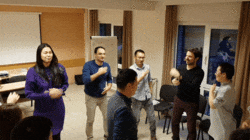Introduction
Introduction
RATIONALE
The introductory session gives an overview of the programme and introduces the main elements that define it (objectives, participants, training assumptions, agenda etc.). It plants the spirit-seeds of the whole programme from the very beginning: fun, open way of learning how to create a more inclusive environment. This session introduces also one of the main learning tools: the learning diary.
OBJECTIVES
- Getting acquainted to the objectives and roadmap of the training;
- Understanding the principles, which will guide the work.
REQUIREMENTS
Materials:
- One copy of a learning diary for each participant;
- One copy of the daily agenda, for each participant.
Time: 30 – 45 min., depending on the size of the group.
DESCRIPTION
- Start the training by introducing the facilitators. Allow the participants to say a few words about themselves. One idea for a name game is the following:
- Ask participants to introduce themselves by answering the following questions (it may be helpful to write them on a flipchart):
- Name (or how they would like to be called);
- Three words, pointing to something essential about their life at that particular moment. For example, one might choose “Romania” (where he/she is from, or “youth work” (his/her current work);
- A consistent quality that they bring to any group they belong to;
- The facilitator will then present the goal of the training: learning about how gender based discrimination is manifested and how to prevent this from happening;
- Emphasize the fact that the aim of the training is not to determine the participants to think in a specific way. The facilitators don’t plan to tell them what is good and what is bad, but rather to help them explore the issues around gender;
- Then, the facilitator will introduce the proposed themes and agenda.
- The programme assumptions (starting points) will then be presented:
“Voluntary” – the programme relies on the fact that participants are there on a voluntary basis, because they are genuinely interested in learning about the topic;
“Interactive” – the training is designed to be very interactive and participants are expected to honestly contribute to the discussions;
“Mutual learning” – we are here to learn from each other and each individual experience is important. The trainer is not the only source of information, but merely one person facilitating the exchange of knowledge and the development of skills and attitudes through different experiences;
“Other’s shoes” – we are willing and actively trying to put ourselves in the “other’s shoes” in order to learn more about the realities surrounding different genders;
“Leaving the comfort zone” – participants are ready and willing to leave their comfort zone while engaging in various experiences provided by the training;
“Fun” – the proposed experiences are meant to help us enjoy the learning process, so the participants are expected to be relaxed and to be themselves during the programme.
“Never enough time” – there will be times when the discussions may seem to short and when a lot of the participants will want to add something, and while we are flexible there will be times we will need to stop before everyone could express.
“No right answer” – the purpose of the training is not to find the right answer, but rather to start a reflection process about this.
- Throughout the training participants, at the end of the day or at the end of specific activities, will have a few minutes to write down in the learning diary what they have learned from the recent experiences, what they have discovered about gender related issues, what attitudes changed and what “A-ha moments” they had.
Five assumptions
Five assumptions
RATIONALE
This activity is an icebreaker/group building exercise. It facilitates conversations and provides basic information about each other. The activity allows getting to know each other in a dual way: what we assume about others is also a way to show how we are, just as much as the real answers to the questions.
RESOURCES
- Time: 45-50 minutes
- Materials: 1 assumption sheet and 1 pen for each participant
- Preparation: Photo copy assumption sheets; prepare a double circle of chairs facing each other, with equal number of chairs in both circles.
INSTRUCTIONS
- Ask the participants to sit in the two circles that face each other.
- Explain that in the first part of this exercise we will try to guess the answers to the different questions by our impressions of the others so far. It is important that they answer only one category per person, and that they do not talk to the person they are making assumptions about.
- Ask participants to write their name on the assumption sheet and then exchange it with their pair (person sitting in from of them).
- Having the assumption sheet in their hand, ask participants to look at the person in front of them and try to guess the answer for assumption number 1 (“1. He is from...”). Offer 30 seconds for this task and when time is up, ask participants to get their sheet back from their partner.
- Have the persons from the outer circle move one chair to the right.
- With the newly created pairs, repeat the sheet exchange and assumption making process for assumption no. 2 (“2. His profession is...”). After 30 seconds, ask the participants to reclaim their sheet and the ones from the outer circle to shift again one seat toward their right.
- Repeat this process until all the 5 assumptions are complete.
- When finishing with the last assumption, ask the participants to interview each other about the real answer to statement number 5. Pairs sitting opposite of each other explain in one minute the truth about that assumption. After the two minutes are over, the facilitator asks the outer circle to move one chair towards the left (retracing the previous pair) and discover the real answer to statement no. 4.
- This is repeated until every assumption has been clarified (four movements).
DEBRIEFING AND EVALUATION
The activity can be used without debriefing, but the following questions can be used if you want to discuss the issues of stereotypes or group composition.
- How was it to answer questions about people you just met?
- Did you get many of them right?
- What were your assumptions based on? What was helpful in making assumptions? What was not?
- What do you think about the things others have assumed about you?
- Can you connect this experience with similar situations in everyday life? Which?
Concentric circles
Concentric circles
RATIONALE
This activity is an icebreaker/group building exercise. It facilitates conversations and provides basic information about each other. The activity allows getting to know each other in a dual way: what we assume about others is also a way to show how we are, just as much as the real answers to the questions.
RESOURCES
- Time: 45-50 minutes
- Materials: 1 assumption sheet and 1 pen for each participant
- Preparation: copies of assumption sheets, prepare a double circle of chairs facing each other, with equal number of chairs in both circles.
INSTRUCTIONS
- Ask the participants to sit in the two circles that face each other.
- Explain that in the first part of this exercise we will try to get to know the other by discussing some topics that the facilitator is presenting them. For each question there will be 2 minutes in which they can give the answer, 1 minute for each. The facilitator will give the questions/statements, count the time, announce when the first minute is up and after two minutes will ask the persons in the outer circle to move one seat to the right.
- Read the first statement and ask participants to look at the person in front of them and each discuss for one minute about it. Announce when 1 minute is up.
- After 2 minutes, have the persons from the outer circle move one chair to the right.
- With the newly created pairs, repeat the process: give the statement, count the first minute, after 2 minutes ask the outer circle to move
- Repeat this process until all the statements are complete.
DEBRIEFING AND EVALUATION
The activity can be used without debriefing, but the following questions can be used if you want to discuss the issues of stereotypes or group composition.
- How did it feel to share this information with your partners?
- Without naming the person, what did it make you feel that you were listened to?
- Was there anything surprising or new to you in the exchange?
- Which questions were more difficult to answer and why?
- Which questions did you enjoy answering?
- What, if anything, you learned from this activity?
HANDOUT
Concentric circles – questions/statements
- What is your favourite holiday and why?
- Describe your favourite teacher from primary school. Why was he/she your favourite?
- Describe a person of a different gender than you that inspired you
- Describe an idea about gender differences that you received while growing up
- Share with your partner a preconception about your gender that disturbs you
- Describe a preconception about your gender that you feel you does not apply to you
- Describe an idea/prejudice you had about the opposite gender that proved to be wrong. How did it change?
- Describe one advantage you would have if you would belong to a different gender
- Describe a time when you were discouraged to do something because of your gender
- Describe a time when you witnessed an act on prejudice on someone because of his/her gender. How did you respond?
- Which gender do you think has more privilege in your society and why?
3 Truths 1 Lie
3 Truths 1 Lie
RATIONALE
This activity is an icebreaker/group building exercise. It enables participants to find out more about the others and to relate better. It can be put in practice at the beginning of training as a great method to break the ice.
RESOURCES
- Time: 30 – 40 minutes, according to the group size
- Materials: Papers and coloured pencils for all the participants
- Preparations: no special preparation is required
INSTRUCTIONS
- Ask the participants to think about their life and to come up with 3 true facts about themselves and with one false fact.
- Tell them that they can write/draw on a piece of paper these true and false facts.
- Give the participant 10 - 15 minutes to show their paper to as many participants as possible and to have them guess which one is the true fact and which are the lies. Have them talk with as many people as possible and to discover as many true things about the others.
DEBRIEFING AND EVALUATION
The activity can be used without debriefing, but the following questions can be used:
- How was to think about the facts? Was it easy to come up the false facts?
- Did you manage to find out about the true facts of others? Was anything surprising?







 Гэты твор твор даступны на ўмовах
Гэты твор твор даступны на ўмовах